Kuala Lumpur: the Capital City
Kuala Lumpur, the vibrant capital city of Malaysia, is a compelling mix of modernity and tradition. Known affectionately as KL, this city is characterized by its dazzling skyline, which is dominated by the iconic Petronas Twin Towers, one of the top tourist destinations in Malaysia. These towers, standing at 452 meters, were once the tallest buildings in the world and remain one of the most recognizable landmarks globally.
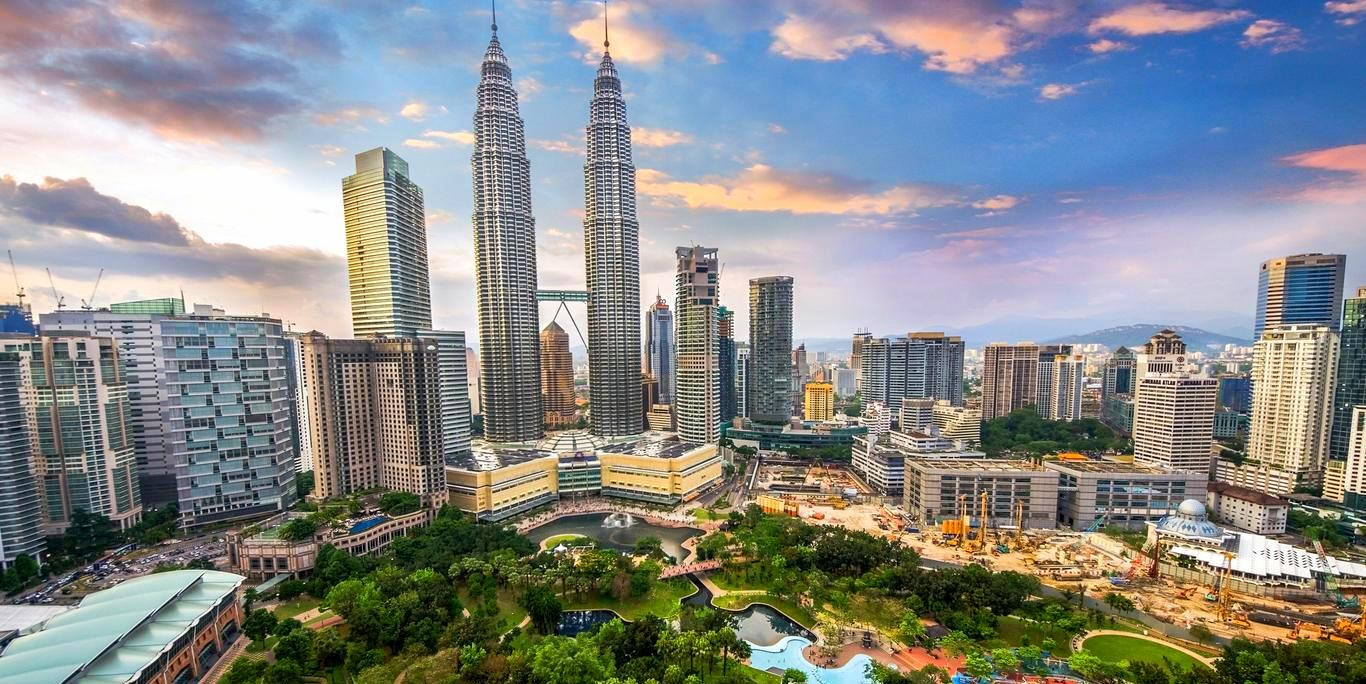
-
Cultural Diversity: Kuala Lumpur is a melting pot of cultures, primarily Malay, Chinese, and Indian, each contributing to the city's unique cultural fabric. This diversity is reflected in the architecture, festivals, and, most notably, the food. Visitors can enjoy a range of culinary delights from street-side vendors in Jalan Alor to upscale dining experiences in the Bukit Bintang area.
-
Shopping and Entertainment: The city is a shopper’s paradise, featuring everything from high-end fashion brands in the sleek Suria KLCC mall to the bustling markets and bazaars of Chinatown, where bargaining is part of the fun. For entertainment, Kuala Lumpur offers a vibrant nightlife scene, with numerous bars and nightclubs that provide lively venues for music and dancing.
-
Historical and Modern Attractions: Aside from the Petronas Towers, other significant attractions include the historic Sultan Abdul Samad Building in Merdeka Square, which offers a glimpse into the city’s colonial past. The KL Tower, another standout feature of the city's skyline, offers panoramic views of the area. The Batu Caves, located just outside the city, is a site of Hindu worship and an annual pilgrimage site for the Thaipusam festival. The intricate series of caves and temples set against a limestone hill provide a serene escape from the city's bustle.
-
Green Spaces: Despite its bustling urban environment, Kuala Lumpur is also home to numerous green spaces. KLCC Park, located at the foot of the Petronas Towers, offers a lush, 50-acre area with jogging paths and a water fountain show. The Perdana Botanical Gardens serve as a tranquil hideaway with beautifully manicured gardens and a collection of rare plants and trees.
-
Accessibility and Connectivity: Kuala Lumpur is well-connected both locally and internationally, making it an accessible destination for tourists. The Kuala Lumpur International Airport (KLIA) is one of Southeast Asia's major aviation hubs, and the city’s advanced public transportation network makes it easy for visitors to navigate.
Whether you're interested in exploring the dynamic urban culture, indulging in diverse culinary delights, or immersing yourself in the historical heritage, Kuala Lumpur offers a captivating mix of experiences that make it a must-see destination in Malaysia.
Penang
Penang, often referred to as the "Pearl of the Orient," is a state located on the northwest coast of Peninsular Malaysia by the Malacca Strait. Renowned for its rich cultural heritage, vibrant street food scene, and well-preserved colonial architecture, Penang offers a captivating blend of East and West, which is evident in every aspect of its cities and daily life.
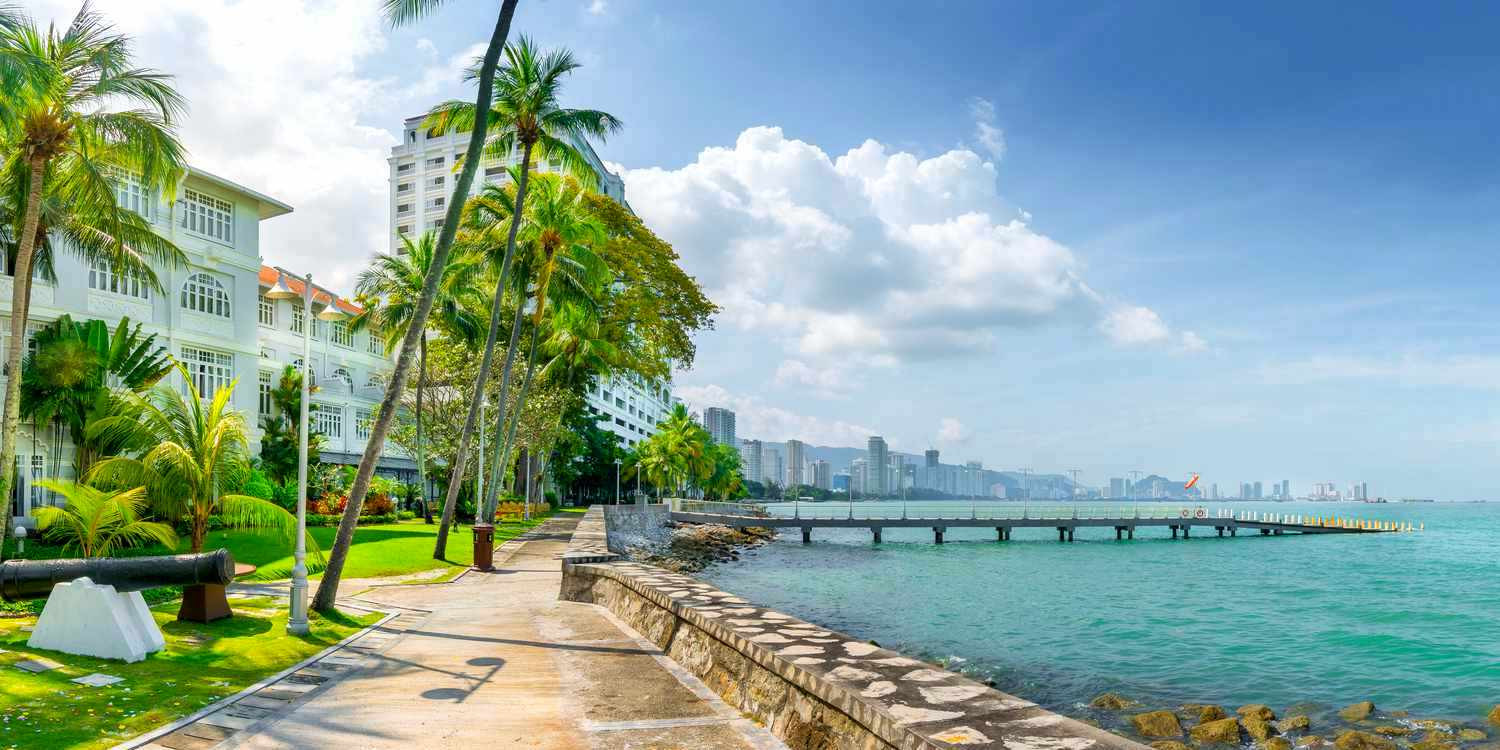
-
George Town: A Cultural Mosaic At the heart of Penang is George Town, a bustling urban center that has been designated a UNESCO World Heritage Site due to its historic architecture. The city is a veritable museum, with streets lined with well-preserved buildings that tell the tales of the city's colonial past under British rule. Walking through George Town, visitors can admire the eclectic mix of colonial, Chinese, Indian, and Malay influences not only in the architecture but also in the vibrant cultural practices that are alive in the city today.
-
Culinary Delights: Penang is arguably the food capital of Malaysia, famous for its diverse and delicious street food. Culinary enthusiasts visit from all around the world to sample dishes like Char Koay Teow, Penang Laksa, and Nasi Kandar, which are available at various hawker stalls and food courts throughout the city. The city's culinary scene reflects its multicultural history, with each ethnic community contributing flavors and ingredients to create a rich food culture that is distinctly Penang.
-
Art and Culture: Penang's commitment to preserving its history and culture is also evident in its thriving art scene. The city's streets are adorned with various murals and street art, particularly around the Armenian Street area, adding a contemporary layer to its historical backdrop. Additionally, Penang hosts several festivals throughout the year, including the George Town Festival, which features local and international artists, musicians, and performers.
-
Natural Attractions: Beyond the urban charm, Penang also offers natural attractions. The Penang National Park features a mixture of forests and coastlines and includes hiking trails that lead to secluded beaches like Monkey Beach and Kerachut Beach. The park is also home to a unique meromictic lake and a canopy walkway that offers stunning views of the park’s flora and fauna.
-
Beaches and Leisure: Penang’s northern coast is lined with a series of beaches, the most famous being Batu Ferringhi. Known for its soft sands and resort-lined shores, Batu Ferringhi is popular among locals and tourists looking for a mix of relaxation and recreational activities. Water sports, night markets, and beachside restaurants provide plenty to do after a day of sunbathing.
-
Accessibility: Penang is well-connected to the rest of Malaysia and Southeast Asia via the Penang International Airport, which is located in the south of the island. The island is also linked to the mainland by the Penang Bridge, one of the longest in the world, making it easily accessible by road.
Penang truly offers a compelling mix of historical intrigue, cultural richness, natural beauty, and gastronomic delights, making it a must-see place in Malaysia. Whether you're wandering through the historical streets of George Town, relaxing on its beaches, or exploring its natural parks, Penang promises a diverse and rewarding experience for all visitors.
Langkawi
Langkawi, officially known as Langkawi, the Jewel of Kedah, is an archipelago of 99 islands on Malaysia’s west coast. Surrounded by turquoise sea, the interior of the main island is a mixture of picturesque paddy fields and jungle-clad hills. If you're looking for a tropical paradise, Langkawi is one of the top tourist destinations in Malaysia, renowned for its excellent diving opportunities, exciting nightlife, and awe-inspiring natural beauty.
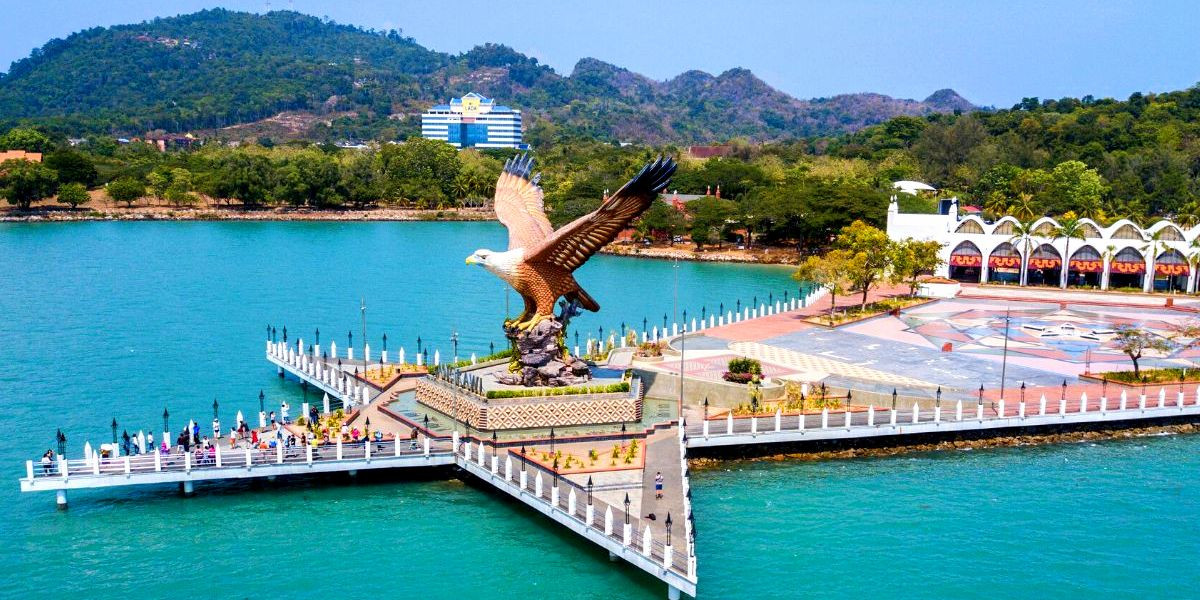
-
Natural Attractions: Langkawi is blessed with a plethora of natural wonders. The Kilim Karst Geoforest Park is part of the larger Langkawi Geopark and features stunning landscapes of limestone formations, mangrove forests, and caves that can be explored via boat tours. Another must-visit is the Langkawi Sky Bridge, a 125-meter-long pedestrian bridge offering spectacular views of the verdant Gunung Mat Cincang and its surroundings.
-
Beaches and Water Sports: The island is most famous for its dazzling beaches, such as Pantai Cenang, Pantai Tengah, and Pantai Kok. These beaches offer long stretches of soft white sand and clear waters, making them perfect for a day of relaxation or water sports. Visitors can engage in jet-skiing, parasailing, and banana boat rides or simply enjoy the vibrant beachside bars and restaurants.
-
Wildlife and Eco-Tours: Langkawi is also a great place for eco-tourists and nature enthusiasts. The Langkawi Wildlife Park & Bird Paradise offers a chance to interact with animals and birds in a setting that mimics their natural habitats. For a more adventurous experience, the Pulau Payar Marine Park is an excellent spot for snorkeling and diving, where one can explore vibrant coral reefs and marine life.
-
Cultural Insights: Langkawi’s cultural attractions provide a deeper understanding of the local way of life. The Craft Cultural Complex showcases traditional Malaysian handicrafts and cultural displays, while the Laman Padi Langkawi offers insights into the island’s rice-growing culture, complete with a museum and rice fields.
-
Cable Car and Sky Bridge: One of Langkawi’s highlights is the Langkawi Cable Car, which provides a steep but scenic ascent up to Mount Mat Cincang. At the top, visitors can step onto the Sky Bridge, which offers breathtaking panoramic views of the entire archipelago and beyond.
-
Luxury and Relaxation: For those seeking luxury and relaxation, Langkawi offers numerous high-end resorts and spas that provide world-class services and amenities. These resorts often feature private beaches, exotic spas, and gourmet dining options, making them perfect for honeymooners and luxury travelers.
-
Accessibility: Langkawi is accessible by air, with direct flights from major cities like Kuala Lumpur and Singapore, or by ferry from places like Kuala Perlis, Kuala Kedah, and Penang. Once on the island, visitors can easily rent cars or motorbikes to explore the scenic roads and hidden corners of the island.
Langkawi is not just a beach-lover's paradise but a destination rich in natural wonders, cultural experiences, and luxury amenities, making it one of the best places to visit in Malaysia for tourists of all kinds. Whether you’re looking for adventure, relaxation, or a bit of both, Langkawi offers a versatile and fulfilling travel experience.
Cameron Highlands
Cameron Highlands, nestled in the heart of Peninsular Malaysia, stands as one of the most picturesque and popular highland retreats in the country. At an elevation of approximately 1,500 meters above sea level, this destination offers a pleasantly cool escape from the tropical heat prevalent throughout much of Malaysia. Known for its verdant landscapes, lush tea plantations, and colonial history, Cameron Highlands is a perfect blend of natural beauty and quaint charm, making it one of the top tourist destinations in Malaysia.

-
Tea Plantations: One of the most iconic attractions in Cameron Highlands is its expansive tea estates. The rolling hills covered in neat rows of tea bushes create a serene and photogenic landscape. Visitors can tour facilities like the BOH Tea Plantation, the largest in Southeast Asia, to learn about the process of tea production from leaf to cup. These tours often conclude with a tea-tasting session, where you can enjoy freshly brewed teas while overlooking the stunning plantation vistas.
-
Nature Trails and Waterfalls: The highlands are crisscrossed with trails that offer opportunities for gentle walks and more strenuous hikes, appealing to outdoor enthusiasts. Popular trails lead to beautiful waterfalls and viewpoints, such as Robinson Waterfall, Thompson Falls, and the Mossy Forest—a surreal and ancient forest where the trees and ground are draped in a thick layer of moss due to the constant mist.
-
Farms and Gardens: Cameron Highlands is renowned for its agriculture, taking advantage of the cooler climate to grow a variety of fruits and vegetables not typically found elsewhere in Malaysia. Visitors can explore strawberry farms, where they can pick fresh strawberries, and visit flower gardens and nurseries that showcase a range of local and imported blooms. The Lavender Garden and the Rose Centre are particular favorites, offering scenic floral displays and the chance to buy plant souvenirs.
-
Markets and Local Produce: The region is also famous for its markets, such as the Kea Farm Market, where local produce and flowers are sold daily. The weekend market in Brinchang is a must-visit, offering everything from fresh produce to culinary treats and local handicrafts. Here, visitors can sample local specialties like strawberry jams, fresh honey, and the renowned Cameron Highlands tea.
-
Colonial Heritage: The colonial history of Cameron Highlands is still visible in its architecture. The area was a favorite retreat for the British during the colonial era, and many of the bungalows and inns have retained their old-world charm. Places like The Lakehouse and the Cameron Highlands Resort offer a glimpse into the past, with traditional English-style afternoon teas and cozy fireplaces.
-
Accessibility: Cameron Highlands is accessible by road from major cities like Kuala Lumpur and Ipoh. The winding ascent through the mountains offers spectacular views and leads you directly into the heart of this tranquil highland paradise.
Whether you’re a nature lover, a photography enthusiast, or simply in need of a cool retreat, Cameron Highlands offers a refreshing getaway with its tranquil environment, stunning landscapes, and a variety of attractions. It's a testament to the natural beauty and unique cultural fabric of Malaysia, making it a must-see destination for visitors to the country.
Malacca
Malacca, also known as Melaka, is a vibrant historical city on the west coast of Peninsular Malaysia. It's a fascinating place that reflects the colonial past of Malaysia, with influences from European settlers including the Portuguese, Dutch, and British. This rich history, combined with traditional Malaysian culture, has earned Malacca a designation as a UNESCO World Heritage Site. Known for its well-preserved architecture, eclectic antique shops, and robust culinary scene, Malacca is a captivating destination that stands as one of the must-see places in Malaysia.
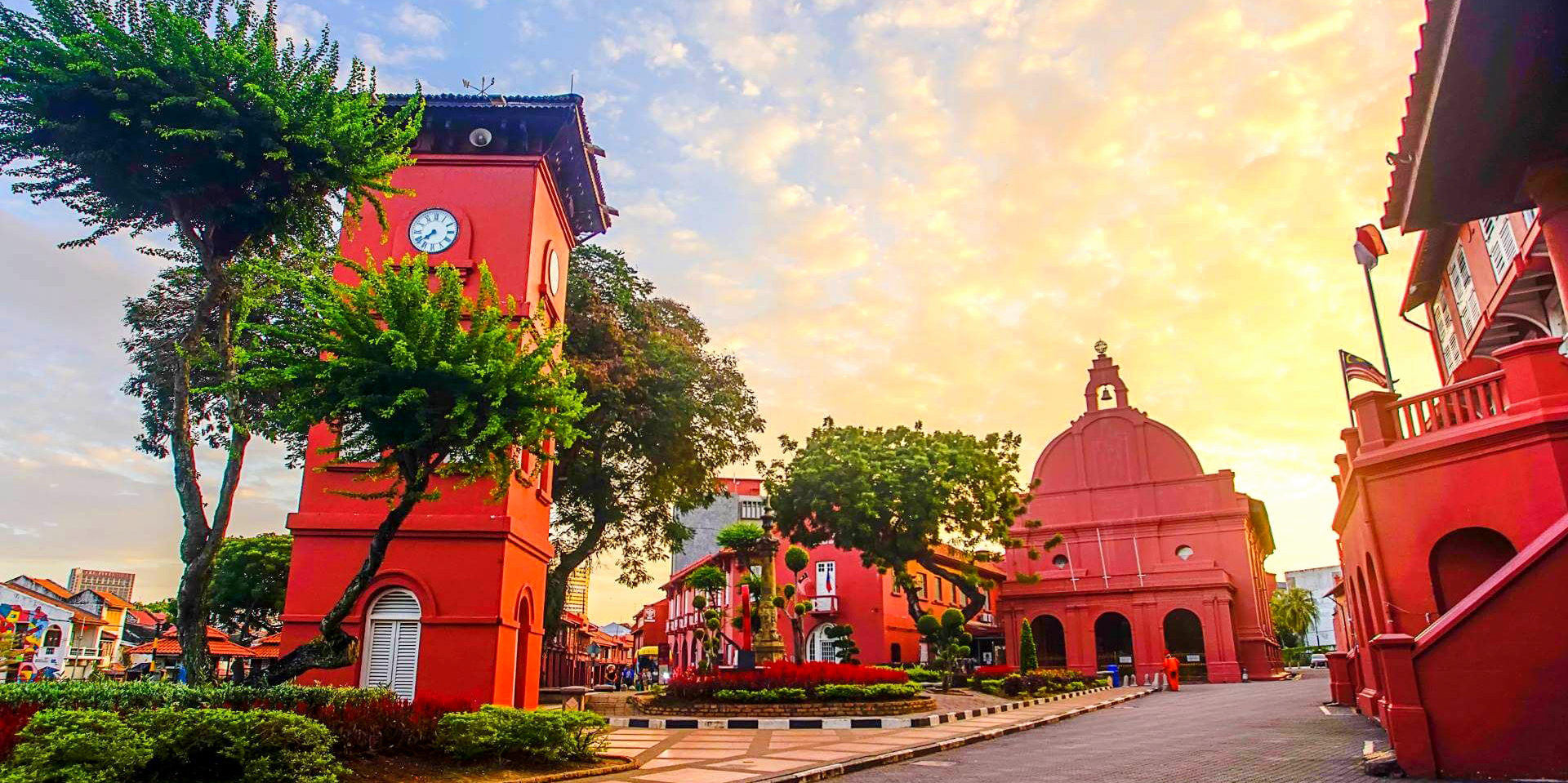
-
Historical Sites and Architecture: At the heart of Malacca's appeal is its historical city center, characterized by quaint streets lined with colorful shop houses. Key landmarks include the A Famosa fort, which is among the oldest surviving European architectural remains in Asia, and Christ Church, a structure that marks the Dutch colonial era with its distinctive red-brick façade. St. Paul’s Hill offers panoramic views of the city and houses the ruins of St. Paul's Church, which serve as a poignant reminder of Malacca’s storied past.
-
Cultural Exploration: The Baba & Nyonya Heritage Museum is another highlight, offering a glimpse into the culture of the Peranakan or Straits Chinese, descendants of Chinese immigrants who came to the Malay archipelago, including Malacca. This community has a unique blend of Chinese and Malay cultural elements, which is reflected in their traditional Baba-Nyonya cuisine, distinctive clothing, and ornate homes.
-
Jonker Street: Jonker Street, the centerpiece of Malacca's Chinatown, transforms into a lively night market over the weekends, where visitors can shop for everything from vintage items to local crafts. The street is also famous for its antique shops and eateries, where you can enjoy local dishes like chicken rice balls and Nyonya laksa, making it a vibrant hub for both shopping and dining.
-
River Cruise and Maritime Museum: A cruise down the Malacca River offers a different perspective of the city, passing by historic buildings, old warehouses (now converted into chic cafes), and murals that depict the city’s history. Meanwhile, the Maritime Museum, housed in a replica of the Portuguese ship Flor de la Mar, provides insights into Malacca’s importance as a maritime trading center in the days before modern colonialism.
-
Culinary Delights: Malacca’s culinary scene is as diverse as its culture. The city is particularly famous for its Portuguese-influenced dishes, such as the spicy "devil curry," and traditional Malay delicacies. Malacca is also known for its dessert, 'cendol', a chilled sweet treat made of shaved ice, coconut milk, jelly noodles, and palm sugar.
-
Accessibility: Malacca is easily accessible from Kuala Lumpur and Singapore via a short drive, making it a popular weekend destination for locals and tourists alike. Its compact size makes it perfect for exploring on foot, or you can ride the colorful trishaws that are elaborately decorated and often feature loud pop music.
Malacca offers a rich tapestry of history, culture, and cuisine, making it a quintessential part of any Malaysian travel itinerary. With its historic charm and unique attractions, Malacca is undoubtedly one of the best places to visit in Malaysia for those looking to delve into the country's storied past while enjoying its contemporary offerings.
Sabah
Sabah, located on the northeastern tip of Borneo, is one of Malaysia's two states on this massive island. Known for its spectacular wildlife, dense rainforests, and stunning coral reefs, Sabah is a paradise for nature lovers and adventure seekers. It is renowned for its biological diversity and is home to some of the most unique ecosystems and endangered species in the world. Whether you're diving into the deep blue seas or climbing the lofty heights of Mount Kinabalu, Sabah offers a range of unforgettable experiences that make it one of the top tourist destinations in Malaysia.
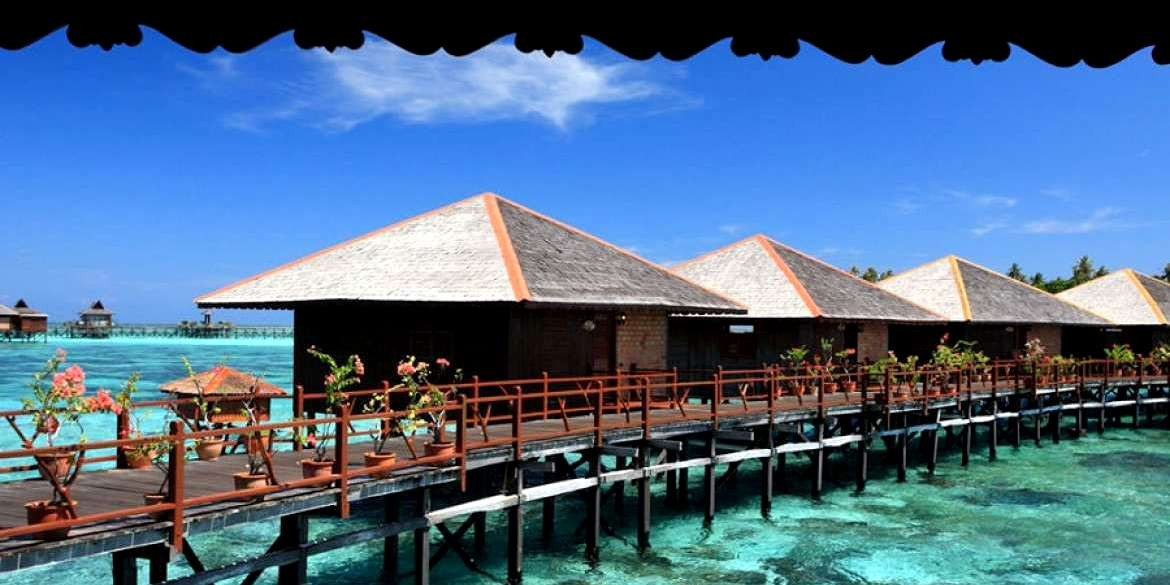
-
Mount Kinabalu: At the heart of Sabah's attractions is Mount Kinabalu, one of Southeast Asia's highest peaks. The mountain is sacred to the local Kadazandusun communities and offers challenging and rewarding treks to the summit. The climb reveals diverse ecosystems, from tropical rainforest at lower levels to alpine meadows higher up, and the panoramic views from the top are truly breathtaking.
-
Diving and Marine Life: Sabah is also famous for its underwater attractions, particularly around the islands of Sipadan and Mabul, which are often ranked among the best diving spots in the world. These areas are teeming with a stunning array of marine life, including turtles, barracudas, and thousands of tropical fish, which thrive among vibrant coral reefs.
-
Wildlife Reserves: The state is a leader in wildlife conservation in Southeast Asia, with numerous sanctuaries such as the Sepilok Orangutan Rehabilitation Centre. Here, visitors can witness the incredible work being done to rehabilitate orphaned orangutans before they are returned to the wild. Nearby, the Bornean Sun Bear Conservation Centre and the Kinabatangan Wildlife Sanctuary offer opportunities to see other native species like the elusive pygmy elephant and the proboscis monkey in their natural habitats.
-
Cultural Heritage: Sabah’s cultural heritage is as diverse as its landscapes, with over 30 different ethnicities. Each group brings its traditions, languages, and festivals, adding to the state’s multicultural tapestry. The Kadazandusun, Murut, and Bajau peoples, among others, are known for their vibrant cultural performances, traditional crafts, and the infamous annual Harvest Festival, or Kaamatan.
-
Eco-Tourism: Sabah is a model for ecotourism, promoting responsible travel to natural areas while conserving the environment and improving the well-being of local people. Its eco-resorts and community-based tourism projects allow visitors to enjoy unique experiences like river cruises, jungle treks, and homestays with local families, all in an environmentally sustainable manner.
-
Accessibility: Sabah is well-connected by air, with international and domestic flights arriving at Kota Kinabalu International Airport, making it accessible to travelers from around the globe. The state's infrastructure allows for easy travel to remote areas, offering a balance of adventure and convenience.
Sabah is a standout destination, offering an extraordinary mix of natural wonders, wildlife encounters, and cultural richness. Its pristine environments and commitment to conservation make it a must-visit location for those who are passionate about nature and adventure. Whether you are scaling the heights of Mount Kinabalu, diving in crystal clear waters, or exploring the rich heritage of its indigenous peoples, Sabah promises an array of experiences that are both thrilling and meaningful.
Perhentian Islands
The Perhentian Islands are a small group of beautiful, coral-fringed islands off the northeast coast of Peninsular Malaysia in the state of Terengganu, close to the Thai border. Known for their crystal clear waters, soft white sandy beaches, and vibrant marine life, the Perhentian Islands are considered one of the best places to visit in Malaysia for beach lovers and underwater enthusiasts alike.
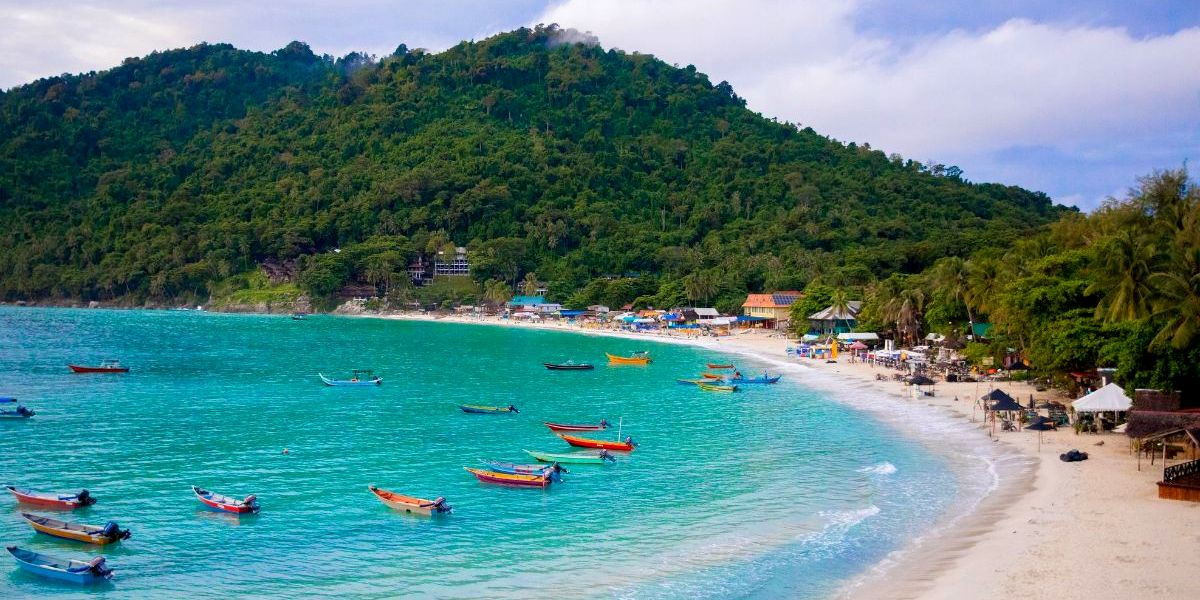
-
Pristine Beaches: The two main islands, Perhentian Besar (Big Perhentian) and Perhentian Kecil (Small Perhentian), each cater to different crowds. Perhentian Besar is typically more suited to families and those looking for a quieter, more relaxed atmosphere, whereas Perhentian Kecil is popular among backpackers and younger travelers seeking a more lively scene. Both islands boast stunning beaches with powdery white sand and azure waters, perfect for sunbathing, swimming, and snorkeling.
-
Diving and Snorkeling: The islands are surrounded by warm, shallow waters that are home to a wide array of marine life, making them a premier destination for snorkeling and diving. The coral reefs here are healthy and well-preserved, offering divers and snorkelers the chance to encounter sea turtles, reef sharks, and a colorful variety of tropical fish. Several dive shops on the islands provide equipment rental and offer certified diving courses, ranging from beginner to advanced levels.
-
Eco-Tourism: In keeping with Malaysia's commitment to conservation, the Perhentian Islands are part of the Terengganu Marine Park, which aims to protect the area's natural environment. Activities like fishing and collecting coral are prohibited, and there are ongoing efforts to educate visitors on the importance of maintaining the islands' pristine condition. Eco-tourism is encouraged, with opportunities for visitors to participate in conservation activities, such as beach clean-ups and coral planting initiatives.
-
Accommodations and Amenities: Accommodation options on the Perhentian Islands range from rustic beach huts and budget hostels to more comfortable resorts. While the amenities may be less luxurious compared to mainland resorts, they offer a unique chance to disconnect from the hustle and bustle and immerse oneself in nature. The islands also have several small restaurants and cafes that serve a mix of local Malay food, as well as some Western dishes.
-
Nightlife and Activities: While nightlife on the Perhentian Islands is not as extensive as in more developed tourist areas, there are still plenty of options for enjoyment after dark, especially on Perhentian Kecil. Beachside bars offer a variety of live music and fire shows, creating a relaxed and enjoyable atmosphere. During the day, in addition to water sports, visitors can explore the islands' jungle trails, which lead to secluded beaches and offer opportunities to observe local wildlife.
-
Accessibility: The Perhentian Islands are accessible by boat from the small town of Kuala Besut, which has direct bus and taxi connections to Kuala Lumpur and the nearby airport in Kota Bharu. The islands are typically visited between March and October, when the weather is best for beach activities and the sea is calm, making it ideal for water sports.
The Perhentian Islands offer an idyllic escape with stunning natural beauty, excellent opportunities for snorkeling and diving, and a laid-back vibe that makes them a must-visit destination for anyone traveling to Malaysia. Whether you're looking to relax on sun-drenched beaches, explore vibrant underwater worlds, or engage in eco-friendly travel, the Perhentian Islands provide a perfect backdrop.
Sipadan Island
Sipadan Island is a legendary diving destination located off the coast of Sabah, Malaysia in the Celebes Sea. This oceanic island was formed by living corals growing on top of an extinct volcanic cone, and it is one of the richest marine habitats in the world. Sipadan is often ranked among the top diving destinations on the planet due to its remarkable underwater biodiversity and unique ecological characteristics, making it a pinnacle site for divers and marine enthusiasts visiting Malaysia.
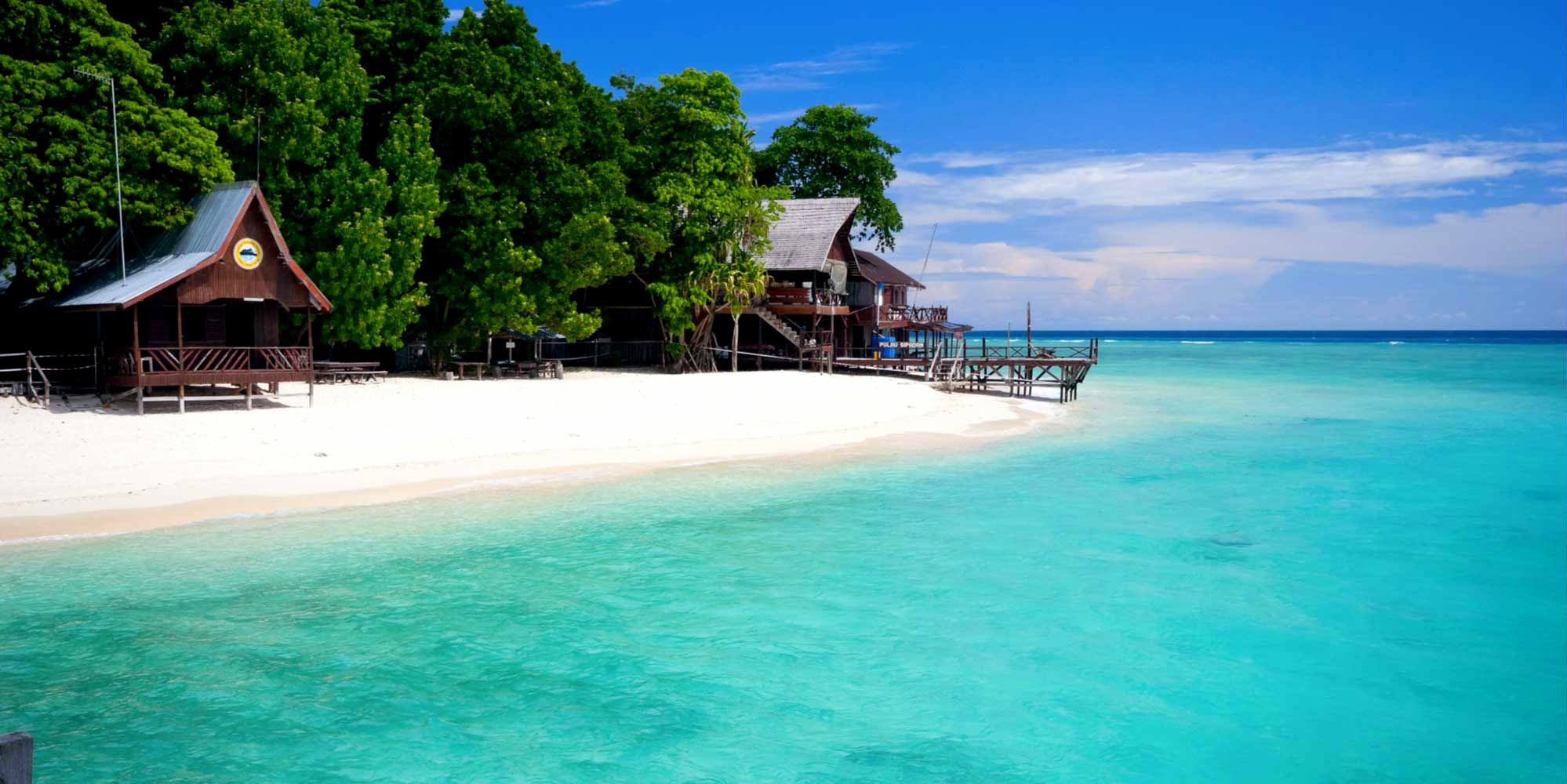
Unique Marine Biodiversity: The waters around Sipadan Island are teeming with life, thanks to its location in the heart of the Indo-Pacific basin, one of the world's most biodiverse marine regions. The coral ecosystem here supports over 3,000 species of fish and hundreds of coral species. Divers at Sipadan often encounter large schools of barracuda, big-eyed trevallies, various species of sharks, and an abundance of turtles, which are seen on almost every dive due to the island being a major nesting site.
Iconic Dive Sites
-
Sipadan is home to numerous dive sites, each offering a unique experience:
-
Barracuda Point is perhaps the most famous, where divers can find themselves surrounded by swirling vortexes of barracuda and jacks.
-
Drop-off is a wall dive where the coral reef abruptly drops over 600 meters into the abyss, providing a thrilling sense of floating above the deep blue.
-
Turtle Cavern features an underwater cave system known for the skeletal remains of turtles that lost their way and drowned.
-
South Point and Whitetip Avenue are renowned for spotting larger pelagic species, including hammerhead and whitetip sharks.
Conservation Efforts: Due to its ecological significance and vulnerability, Sipadan is highly protected. The number of divers allowed to visit each day is strictly limited, and there are no overnight accommodations on the island to minimize environmental impact. All resorts are based on nearby islands like Mabul and Kapalai, from where regulated diving trips to Sipadan are organized.
How to Dive Sipadan: Obtaining a permit to dive at Sipadan can be competitive, and it is advisable to book well in advance through registered dive operators based on the surrounding islands. Most divers stay at resorts on Mabul or Kapalai and take a short boat ride to Sipadan. Dive packages often include multiple dives at Sipadan along with opportunities to explore the equally impressive, albeit less famous, surrounding dive sites.
Sipadan remains a bucket-list destination for serious divers due to its spectacular drop-offs, vivid coral walls, and incredibly diverse marine life. Its global significance and phenomenal beauty underscore its status as one of the top tourist destinations in Malaysia for underwater adventure. The island not only offers a world-class diving experience but also plays a crucial role in the conservation of marine biodiversity in Southeast Asia.
Taman Negara
Taman Negara, which translates to "National Park" in Malay, is one of the oldest primary rainforests in the world, estimated to be over 130 million years old. This vast national park spans 4,343 square kilometers across three Malaysian states—Pahang, Kelantan, and Terengganu. Taman Negara is a treasure trove of biodiversity and offers a unique opportunity for ecotourism and adventure in the heart of Malaysia's dense jungle.
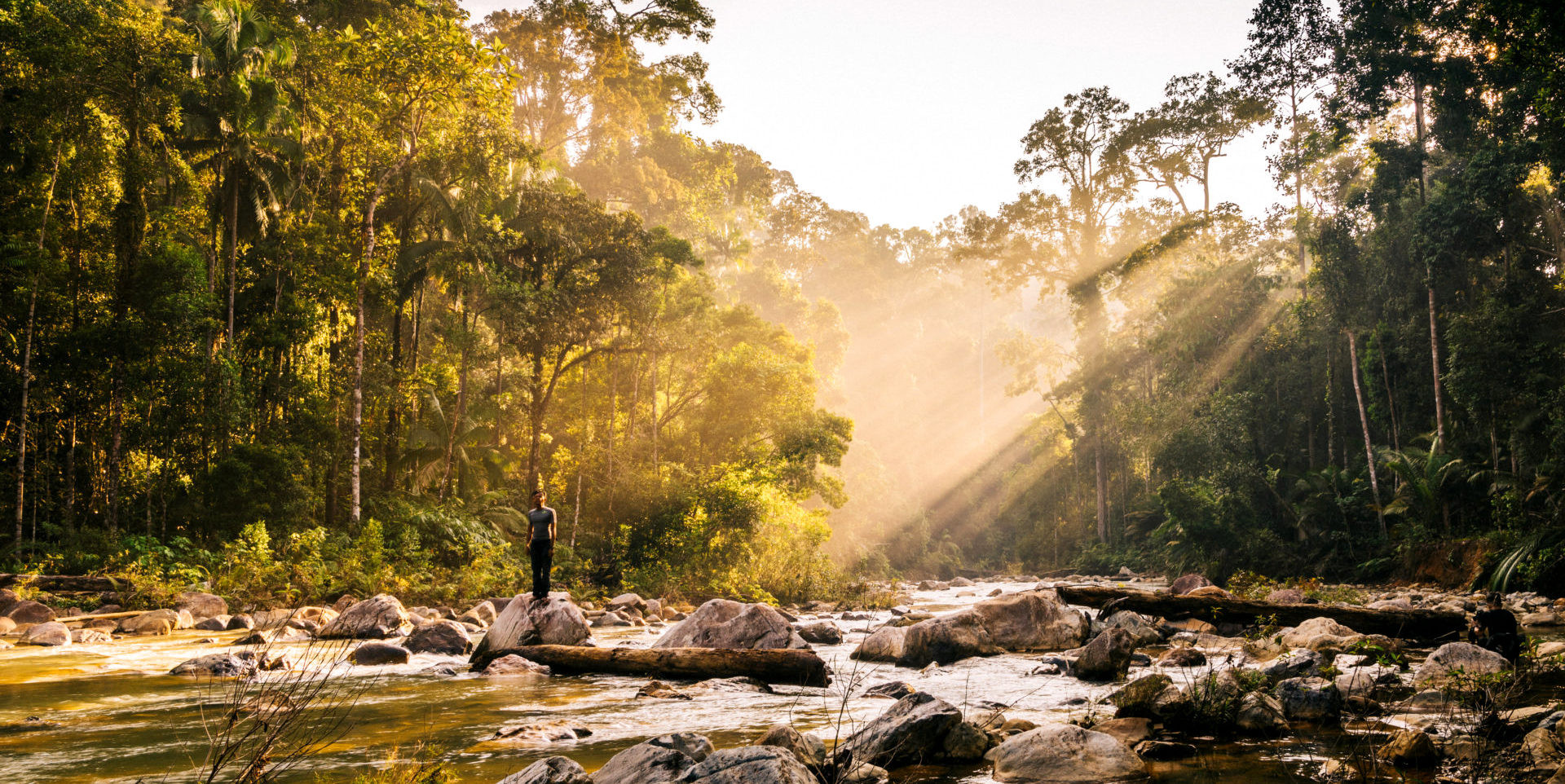 \
\
Biodiversity and Natural Beauty: Taman Negara is home to a rich variety of flora and fauna, including rare species such as the Malayan tiger, Asian elephant, and Malayan tapir. The park is also a bird watcher's paradise, with over 350 species recorded. Its dense canopy, intertwined with rivers and waterfalls, creates a lush, vibrant landscape that is both serene and mysterious.
Activities and Attractions
-
Canopy Walkway: One of the highlights of Taman Negara is its canopy walkway, which is among the longest in the world. Suspended 30 meters above the ground, it offers a panoramic view of the rainforest's rich ecosystem from the perspective of its uppermost layers.
-
Jungle Trekking: There are numerous trails available, ranging from short walks to challenging treks like the climb to Gunung Tahan, the highest peak in Peninsular Malaysia. These treks provide opportunities to observe wildlife in its natural habitat and explore the vast diversity of the jungle.
-
Night Safaris: A night safari, whether on foot or by boat, opens up a whole new world of nocturnal wildlife, giving visitors a chance to spot creatures that are shy during the day.
-
River Cruises: The Tembeling River, which flows through the park, is a perfect way to enjoy the tranquility of the rainforest. River cruises offer a relaxing way to observe the lush riverine environment and the wildlife that comes to the riverbanks.
-
Visit Orang Asli Villages: Taman Negara is also home to the Orang Asli, the indigenous people of Peninsular Malaysia. Visiting these villages can provide insights into their traditional ways of life, which are closely tied to the rainforest.
Conservation Efforts: As a protected area, Taman Negara plays a crucial role in the conservation of Malaysia’s natural heritage. Efforts are continuously made to preserve its ecosystems and promote sustainable tourism practices that minimize environmental impact while benefiting local communities.
Planning Your Visit: Taman Negara is accessible via Kuala Tahan in Pahang, which serves as the main entry point. Visitors can reach Kuala Tahan by road from Kuala Lumpur and then take a boat to the park headquarters. There are various accommodation options ranging from jungle lodges to basic campsites, catering to different levels of comfort and adventure.
Taman Negara offers an immersive experience in one of the world's oldest rainforests, providing a unique blend of adventure, nature, and culture. It's a must-visit destination for those interested in ecology, biodiversity, and the natural beauty of Malaysia. Whether you are a trekking enthusiast, wildlife observer, or just looking to escape into the tranquility of nature, Taman Negara has something spectacular to offer.
Tips for Best Places to visit in Malaysia
Visiting Malaysia is an enriching experience due to its vibrant culture, stunning landscapes, and diverse attractions. Whether you're exploring bustling cities, tranquil beaches, or lush rainforests, here are some tips to help you get the most out of the best places to visit in Malaysia:
-
Understand the climate: Malaysia's climate is typically tropical, with high humidity and temperatures averaging around 30°C year-round. The country experiences a rainy season from October to March on the east coast and from April to October on the west coast. Plan your activities accordingly, especially if they involve outdoor adventures.
-
Dive into the cuisine: Malaysian food is a delightful fusion of Malay, Chinese, and Indian influences. Don't miss trying local specialties like Nasi Lemak, Satay, Char Kuey Teow, and Laksa. Each region has its unique dishes and flavors, so explore local eateries and street food markets.
-
Dress modestly: Particularly when visiting rural areas, religious sites, and mosques. It’s respectful to cover shoulders and knees. Always remove shoes before entering someone’s home or place of worship.
-
Understanding diversity: Malaysia is a multicultural nation with significant Malay, Chinese, and Indian populations. Each community may have its own customs and festivals, offering a rich tapestry of experiences but requiring sensitivity to cultural norms.
-
Visit lesser-known spots: While places like Kuala Lumpur and Penang are must-visits, exploring lesser-known destinations like the Cameron Highlands, the Perhentian Islands, or Borneo's remote regions can provide a more authentic glimpse into Malaysia’s natural beauty and cultural richness.
-
Leverage the infrastructure: Malaysia has an efficient public transportation system, especially in Kuala Lumpur, which includes buses, trains, and a monorail. These can be a cost-effective and convenient way to explore cities.
-
Buy a local SIM card: This is inexpensive and widely available. Having a local mobile data connection can be invaluable for navigation, translation, and finding information about attractions and dining.
-
Outdoor activities: Malaysia offers world-class diving, hiking, and wildlife-watching opportunities. Whether it’s climbing Mount Kinabalu, diving in Sipadan, or exploring the ancient rainforests of Taman Negara, be prepared with appropriate gear and respect local conservation efforts.
-
Support local artisans: Malaysia is known for its handicrafts, textiles, and traditional art. Purchasing from local artisans not only provides you with a unique souvenir but also supports the local economy.
-
Festival timing: Visiting during a local festival can be a fantastic experience. Festivals such as Diwali, Chinese New Year, and Hari Raya Puasa are celebrated with great enthusiasm and offer a deeper insight into the cultural fabric of Malaysia.
-
Stay healthy: Stay hydrated, use sunscreen, and carry insect repellent to protect against mosquitoes, especially in rural and forested areas. Be mindful of the water quality, and opt for bottled water if unsure.
By following these tips, you can enhance your travel experience in Malaysia, making it not only enjoyable but also respectful and insightful.
Ideal Time for Best Places to visit in Malaysia
Visiting Malaysia during different seasons can offer unique experiences tailored to specific interests and activities. Here’s how you can plan your travel based on seasonal variations across the country:
Dry Season (May to September)
-
General Climate: The weather is typically drier and less humid, making it the best time for outdoor activities and exploration.
-
Activities: Ideal for urban exploration in cities like Kuala Lumpur and George Town. Also, a great time for hiking in places like Cameron Highlands and exploring national parks such as Taman Negara.
-
East Coast of Peninsular Malaysia: This period is perfect for visiting the East Coast islands such as Tioman, Redang, and the Perhentian Islands, where you can enjoy snorkeling, diving, and beach activities under clear skies and calm sea conditions.
Monsoon Season (November to February)
-
General Climate: The northeast monsoon hits the East Coast of Peninsular Malaysia, bringing heavy rains and rough seas, which can lead to some resort closures and limited ferry services.
-
Activities: While the East Coast is less accessible, the West Coast, including Penang and Langkawi, is more welcoming during this time with less intense rainfall, suitable for cultural tours and leisure beach activities.
-
Attractions: This is a good time for those looking to explore the West Coast's cultural sites, shopping, and culinary delights without the peak season crowds.
Wet Season (April to October)
-
General Climate: The southwest monsoon affects the West Coast with occasional rain showers, though generally lighter than the northeast monsoon.
-
Activities: Suitable for visiting the West Coast as the rain is not continuous and allows for enjoyable travel experiences. Outdoor activities are still possible during breaks in the rain.
-
Borneo (Sabah and Sarawak): These months are fairly dry in East Malaysia, making it ideal for wildlife observation in places like the Kinabatangan River and diving around Sipadan Island.
Inter-Monsoonal Period (March, April, October)
-
General Climate: These transitional months can bring unpredictable weather with occasional thunderstorms, but they usually clear quickly.
-
Advantages: Fewer tourists and often lower prices make this a great time for those who don’t mind a bit of rain. It’s also a good opportunity to enjoy the lush greenery that the rain brings, making scenic destinations like the Cameron Highlands particularly beautiful.
-
Cultural Events: Festivals such as Deepavali and Hari Raya Haji often occur around these times, offering a chance to experience Malaysia’s vibrant cultural festivities.
Each season in Malaysia has its advantages, depending on what you're looking to do and where you want to go. Whether it's lounging on sunny beaches, trekking through lush rainforests, or exploring bustling cities, planning according to the seasons can enhance your experience, allowing you to make the most of your visit to this diverse and beautiful country.
Malaysia is a vibrant mosaic of cultures and landscapes, offering a diverse array of attractions for every traveler. From the bustling streets of Kuala Lumpur to the pristine waters of Sipadan Island and the ancient rainforests of Taman Negara, each destination provides a unique experience. Whether you're climbing Mount Kinabalu, exploring the cultural heritage of Penang, or relaxing on the beaches of the Perhentian Islands, Malaysia promises unforgettable adventures and culinary delights in a welcoming, multicultural setting. This Southeast Asian gem is a perfect blend of natural beauty, historical intrigue, and cultural richness, making it an essential destination for any travel enthusiast.
FAQs for Best Places to visit in Malaysia
Q. What is the best time to visit Malaysia?
A. The best time to visit Malaysia generally depends on the region. For the west coast (e.g., Penang, Malacca), November to March is ideal, while the east coast (e.g., Perhentian Islands) is best from March to September. Borneo's Sabah and Sarawak are great to visit from June to September.
Q. Do I need a visa to visit Malaysia?
A. Many nationalities can enter Malaysia without a visa for stays of up to 90 days. However, visa requirements vary by country, so it's essential to check the latest visa regulations before your trip.
Q. Is Malaysia safe for tourists?
A. Malaysia is generally safe for tourists, with low crime rates in tourist areas. However, as with any travel destination, it's wise to take standard safety precautions, especially in crowded places.
Q. What are the must-try foods in Malaysia?
A. Malaysia's culinary scene is diverse. Must-try dishes include Nasi Lemak, Satay, Char Kway Teow, Laksa, and Roti Canai. Each region has its specialties, so explore local markets and street food stalls.
Q. Can I drink tap water in Malaysia?
A. It's advisable to drink bottled or filtered water in Malaysia, as tap water may not be safe to drink everywhere, especially in rural areas.
Q. What language is spoken in Malaysia?
A. Malay (Bahasa Malaysia) is the official language. English is widely spoken, especially in urban areas and tourist spots, making communication relatively easy for travelers.
Q. What should I pack for a trip to Malaysia?
A. Pack light, breathable clothing due to the hot and humid climate. Include rain gear, especially if traveling during the monsoon season, and conservative clothing for visiting religious sites.
Q. How do I get around Malaysia?
A. Malaysia has a well-developed transportation network. In cities, public transport (trains, buses) is efficient. For intercity travel, domestic flights, buses, and trains are good options. Taxis and ride-hailing services like Grab are widely available.
Q. Are there any cultural customs I should be aware of?
A. Malaysia is a multicultural society with Malay, Chinese, and Indian influences. Respect local customs, dress modestly when necessary, and remove shoes before entering homes and places of worship.
Q. What are the top attractions in Malaysia?
A. Top attractions include the Petronas Twin Towers in Kuala Lumpur, the UNESCO World Heritage sites of George Town and Malacca, the lush landscapes of the Cameron Highlands, the tropical islands of Langkawi and the Perhentian Islands, and the biodiverse rainforests of Borneo.
For Malaysia tour Itinerary suggestion.
If you are looking for different kinds of Nepal Tours or Trekking Packages, feel free to contact us.
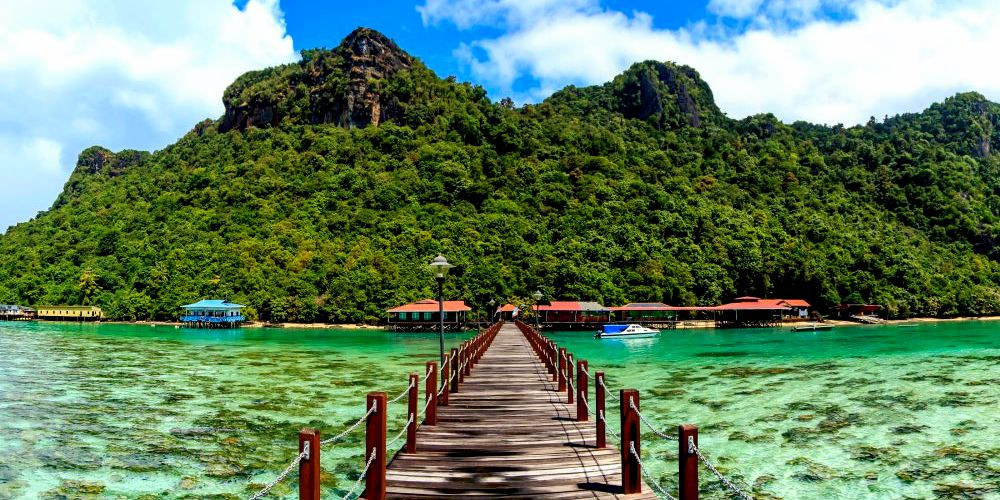









 \
\